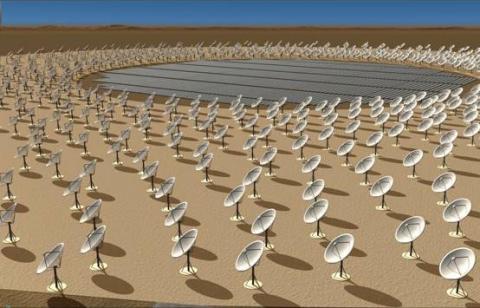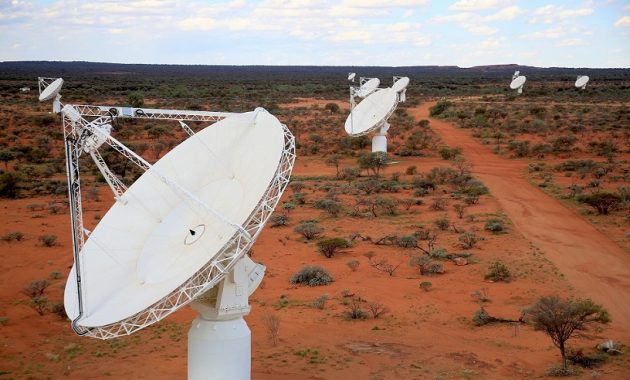In a few years, radio astronomers will also have access to a new generation radio telescope, the Square Kilometer Array (Square Kilometer Square or SKA) being built in Australia and South Africa, which should be operational by 2020. Although 10 countries form the core of the SKA, about 100 organizations from twenty countries participate in its design and development that requires the most powerful supercomputers and a computer network of the latest generation. The first phase of the project cost 650 million euros and its total cost is expected to exceed 1 billion euros.
The SKA installation in South Africa will consist of hundreds and finally thousands of 15m diameter parabolic antennas operating at medium and high frequency interferometry (between 50 MHz and 20 GHz, between 6 m and 1.5 cm in length). wave) while the SKA installation in Australia will eventually have a million low-frequency antennas (50-350 MHz). Thanks to SKA, astrophysicists can explore the confines of the Universe and analyze in detail the properties of quasars, primordial galaxies, enigmatic FRB sources and all sources of magnetic fields including the Sun and pulsars.
According to forecasts, SKA is expected to have a hundredfold increase in the number of cosmic magnetic field sources (see M.Johnston-Hollitt et al., 2015). Given the unmatched performance of the SKA, astronomers can also use it to specify the structure and evolution of the Universe by studying the amount of matter converted into energy by the stars at different times and especially during the reionization. that is, beyond z = 6 (see also The future of the universe).


luyf
Good good
gg
fad
efe
cvb
ads